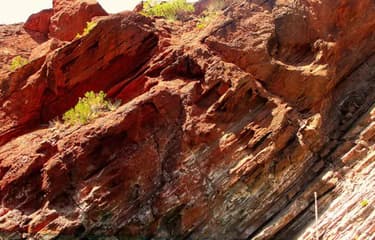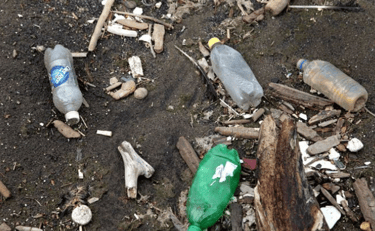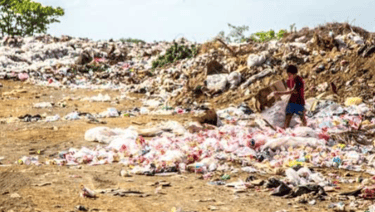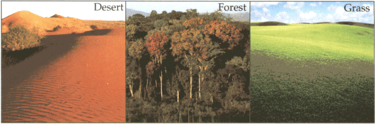Embibe Experts Solutions for Chapter: Soil, Exercise 1: Exercise
Embibe Experts Science Solutions for Exercise - Embibe Experts Solutions for Chapter: Soil, Exercise 1: Exercise
Attempt the free practice questions on Chapter 9: Soil, Exercise 1: Exercise with hints and solutions to strengthen your understanding. THINK ABOVE AND BEYOND SCIENCE PRACTICE BOOKS solutions are prepared by Experienced Embibe Experts.
Questions from Embibe Experts Solutions for Chapter: Soil, Exercise 1: Exercise with Hints & Solutions
Soil is one of the most important natural resources. Soil is formed from the rocks. It provides anchorage to the plants and supplies water and nutrients. It is a home to many organisms. Soil is essential for agriculture and agriculture provides food, clothing and shelter for all. Soil is thus an inseparable part of our life.
a) If rocks had not broken down, life would not have developed on the earth. Why?
b) Discuss the factors that affect soil formation.

A sample of soil is taken in a funnel lined with filter paper. The funnel is placed over a measuring cylinder. At , Raksha starts to pour of water slowly on the soil. She finishes pouring all the water by . Given here are the readings of water levels in the measuring cylinder at different times.
| Time | Water level in the cylinder |
Look at the table and answer the questions below:
1. How much water (in ) was absorbed by the soil?
2. What is the percolation rate? Give your answer in .
3. Which type of soil is the sample? Sandy soil, clayey soil or loamy soil. Give reasons for your answer.
Priya poured a litre of water into a pot with a hole filled with garden soil. After a while, she collected the water dropping from the hole below and measured it in a beaker. The beaker reading showed as . She was shocked and asked her teacher what had happened to the rest of the water. The teacher informed that soil has a water-holding capacity. She also explained to her the various properties of soil, as well as how to calculate the percentage of water absorption of soil. After she explained everything, the teacher asks her to calculate the percentage of water absorption of the soil if there is of soil in the pot. (Assume the density of water as ). Also, give a reason why soil absorbs water.

Amit and his friends are having fun playing with soil in the field. Amit gathered some soil from the ground in a tiny bucket and brought it into his house. He then emptied the bucket in his compound. All the kids looked at the various things other than soil, like chocolate pieces, glass fragments, etc. When Amit's mother saw them playing with all these things, she warned them not to touch these soil pollutants as they can harm them and also contains fertilisers and pesticides. She also stated said, "Prolonged usage of pesticides is undesirable." Amit was taken aback by her response because he was aware that pesticides and fertilisers were used to increase crop yield.
a) "Prolonged use of pesticides is undesirable". Comment on this statement given by Amit's mother.
b) How is soil pollution caused? Discuss some measures of how soil pollution can be controlled.


Rohan and his friends play on a field nearby their house. Once, while playing a game during the rainy season, his friend discovered some little organisms in the ground. He showed them to Rohan. Rohan was startled and believed them to be snakes. All of them discussed it for sometime, but could not arrive at a conclusion. Rohan's father is a farmer, and Rohan thought of asking about this organism to him. They put the organism in a Polythene and brought it home to show it to Rohan's dad. All the kids went to Rohan's father and showed him the organism. Rohan's father told that it is not a snake, and these organisms are friendly creatures and are of great use to the farmers.

Answer the following questions:
a) What is the name of this unknown creature?
b) Why during the rainy season, these unknown creatures come to the surface instead of hiding in their burrows?
c) Why these organisms are farmer-friendly?
Ranjini went outside with her father during the rainy season. While crossing a bridge, she saw that the river water appeared reddish-orange in colour. However, the water was practically translucent a few months earlier. She questioned her father about the reason for this colour change.
Her father explained that soil erosion is the reason for this colour change. He continued by saying that during rain, precipitation dissolves topsoil and carries it down rivers, changing the colour of the water and making it muddy.
Answer the following questions:
a) What is soil erosion?
b) Where will the soil erosion be maximum, in thick forests or bare lands?


A teacher was teaching students about the properties of soil in a classroom. Later, the teacher led all the students to the laboratory, where two beakers, A and B, were filled with different types of soil. The teacher called up two students near the table and instructed them to use measuring cylinders and funnel. The teacher then instructed them to fill one funnel with soil from beaker A and the other with soil from beaker B, and to place each funnel over the measuring cylinder. The teacher called up two more students and handed each one of them the two beakers filled with an equal amount of water, instructing them to slowly pour water into each funnel. After a while, the teacher took both measuring cylinders and measured the water collected after passing through each soil sample.

A. The water level in measuring cylinder B is less than the level in cylinder A. What does this indicate?
B. What property of soil is being measured here?
C. Write the formula to measure the percentage of water absorbed.
At Prasanna's house, they were digging a well. While the well was being dug, he noticed that there were different layers of soil, and each layer of soil has a different texture. He was surprised to find that only the top layer of soil had plants and trees, while the lower layers had no plants or roots. So he asked his elder brother why plants are only found in the upper layers of the soil and not in the lower layers. His brother responded that only the upper layer of soil contains all the substances required by plants.

From the above understanding, answer the following questions:
A. What is the name of the upper layer of the soil?
B. Give a reason why upper layer of soil most suited for plants?
C. Write the features of upper layer of the soil.
